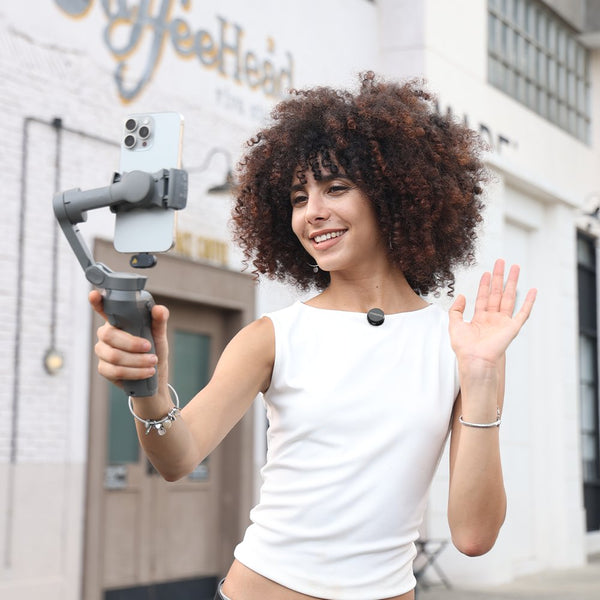Whether you're starting a podcast or live-streaming your favorite game, high-quality audio can be the difference between amateur content and a professional production. While many creators start with a basic USB microphone, eventually, most realize they need something more robust to compete in today's saturated content world. This is where a great audio interface becomes essential.
An audio interface acts as the bridge between your microphone and your recording or streaming software. It converts analog sound from your mic into digital data your computer can understand—enhancing sound quality, reducing latency, and allowing better control over your audio. For podcasters aiming for broadcast-level clarity and streamers seeking real-time, crisp communication, a good audio interface is a must-have.
What Does an Audio Interface Do for Podcasters and Streamers?
An audio interface connects your microphone or instrument to your computer and improves your sound quality by providing higher-quality analog-to-digital conversion (ADC). Unlike internal sound cards, audio interfaces are built for professional-grade audio performance.
For podcasters, this means clean, rich vocal recordings with minimal distortion. For streamers, it means smooth, live sound with lower chances of echo or dropouts. Most audio interfaces also include preamps, gain controls, phantom power for condenser mics, and inputs for multiple microphones or instruments—making them incredibly versatile. That’s what makes even a best affordable audio interface an essential tool in your setup.
How Audio Interfaces Improve Voice Clarity and Reduce Noise
Voice clarity is crucial in both podcasting and live streaming. Audio interfaces often come with low-noise preamps, which amplify your microphone signal without introducing hiss or hum. This is essential when using an XLR microphone that relies on clean gain to produce a full-bodied sound.
Additionally, many audio interfaces provide balanced connections (like XLR or 1/4" TRS), which naturally reject interference and noise better than unbalanced cables. The result? Crisper vocals, less background noise, and a more professional final product.
Why Gamers Need an Audio Interface for Crisp Commentary
Gamers rely on real-time communication, whether it's coordinating with teammates or engaging their audience during a livestream. A high-quality audio interface allows gamers to:
-
Use professional XLR mics for better speech intelligibility
-
Adjust gain, monitor audio, and control levels without relying on software
-
Eliminate USB mic bottlenecks, which often cause latency and inconsistent volume
By using a great audio interface, your commentary will sound more polished—keeping your viewers engaged and improving your overall stream quality.
Latency Explained: How Audio Interfaces Minimize Delay
Latency refers to the delay between when you speak and when the sound reaches your computer or audience. Built-in sound cards or USB microphones often suffer from high latency, which can be frustrating, especially for live content.
Audio interfaces reduce latency by using dedicated drivers like ASIO (Audio Stream Input/Output) on Windows, or Core Audio on macOS. These drivers allow faster, more efficient data processing, meaning you hear yourself in real-time without annoying delays—ideal for live podcast recording, monitoring during streaming, or syncing voice with gameplay.
How Audio Interfaces Enable Better Control of Your Sound Mix
One of the biggest benefits of a good audio interface is hands-on control. Most interfaces offer:
-
Independent volume knobs for input and output
-
Direct monitoring options (listen to your voice without computer delay)
-
Multiple input/output channels to manage mics, instruments, and headphones
This level of control is invaluable for podcasters running multi-guest sessions and streamers balancing game audio, voice chat, and background music. You can tweak the levels in real time without disrupting your content.
Best Budget XLR Mics and Audio Interfaces for Streaming and Podcasting
For those seeking quality on a budget, here are top value combinations that include a best budget audio interface and a high-performance XLR mic::
Maonocaster AME2 Audio Interface & Podcast Equipment with Maono PM500 XLR Mic

This bundle offers a high-performance condenser mic paired with the Maonocaster AME2, which includes preamps, EQ controls, sound effects, and multiple channel inputs—ideal for interview-style podcasts or solo creators who want studio-quality sound.
Maonocaster G1 Neo Audio Mixer for Game Streamers with Maono PD200X USB/XLR Mic

Perfect for gaming streamers, the G1 Neo mixer is portable, easy to use, and integrates seamlessly with streaming platforms. Paired with the hybrid USB/XLR PD200X, it offers flexibility and top-tier voice clarity, even during long gaming sessions.
Easy Set Up: Maonocaster AM200 Lite Podcasting Studio for Two People

This beginner-friendly kit is one of the best budget audio interface options for duo podcasts or interviews. With dual mic inputs, voice effects, noise reduction, and sound pads, it provides everything two people need to produce a professional-sounding podcast right out of the box.
FAQ Section
Q: What is an audio interface and why do I need one for podcasting?
A: It converts analog sound into digital and enhances quality with better preamps, gain control, and lower noise—essential for professional podcasting.
Q: How does an audio interface improve my game stream audio?
A: It gives you better sound clarity, control, and real-time monitoring—making your voice crisp and latency-free.
Q: Is an audio interface better than a USB microphone for voice clarity?
A: Yes, especially with XLR mics. Audio interfaces offer superior preamps and clarity that USB mics usually can’t match.
Q: Can I use an audio interface with streaming software like OBS?
A: Absolutely. OBS recognizes audio interfaces as sound input devices. Just select it in your audio settings.
Q: Do I really need an audio interface if I'm just starting a podcast?
A: Not necessarily, but if you want scalable, high-quality sound and plan to grow, a best affordable audio interface is a smart investment early on.
Q: What’s the difference in sound quality with and without an audio interface?
A: With a good audio interface, expect cleaner, warmer, and fuller sound—especially with dynamic or condenser XLR mics.
Q: How does an audio interface reduce background noise and static?
A: By using low-noise preamps and balanced inputs, it filters out unwanted interference and hum.
Q: Can an audio interface eliminate mic latency during live streams?
A: Yes, especially when using direct monitoring and proper audio drivers like ASIO or Core Audio.
Q: What types of connections (USB, XLR) do audio interfaces support?
A: Most interfaces offer XLR inputs, 1/4” TRS for instruments, headphone outputs, and USB or USB-C connectivity to your computer.
Q: Will an audio interface make my voice sound more professional?
A: Yes—through improved clarity, gain control, and EQ features, your voice will sound richer and more polished.
Q: Can I use an audio interface with a USB mic or only XLR mics?
A: Audio interfaces are designed for XLR mics. USB mics bypass the interface and don’t benefit from its features.
Q: How do I connect an audio interface to my PC or gaming console?
A: Use the USB cable provided to connect to your PC/Mac. Some interfaces support consoles via line-in or auxiliary routing.
Q: Does my audio interface work with platforms like Discord, Twitch, and Zoom?
A: Yes, once set as your default input/output device, it works with most platforms seamlessly.
Q: What gear do I need alongside an audio interface for a full setup?
A: At minimum: XLR microphone, headphones, mic stand, pop filter, and possibly a boom arm or shock mount.
Q: Can I plug in multiple mics or instruments at once using an audio interface?
A: Yes, depending on the number of inputs your interface has (typically 2–4 for best budget audio interface models).
Q: What’s the best budget audio interface for a two-person podcast?
A: The Maonocaster AM200 Lite is perfect for two-person setups with plug-and-play simplicity.
Q: Which features should I look for in an audio interface for game streaming?
A: Look for low-latency monitoring, mute buttons, headphone jack, mix control, and platform compatibility.
Q: Are there audio interfaces with built-in preamps or DSP effects?
A: Yes. Many interfaces like the Maonocaster AME2 come with preamps, EQ, reverb, and vocal effects built in.
Q: How much should I spend on an audio interface for semi-pro recording?
A: Expect to spend $100–$300, depending on the number of inputs and features you need.
Q: What are the most user-friendly audio interfaces for beginners?
A: The Maonocaster AM200 Lite and G1 Neo are plug-and-play and made for beginners in podcasting and streaming.
Conclusion
In the worlds of podcasting and game streaming, audio quality defines credibility. Viewers and listeners expect crisp, clear sound—and even the most compelling content can fall flat if it’s plagued by echo, noise, or delay. That’s why a great audio interface is more than just a tool—it's a necessity.
Whether you're just starting out or leveling up your content creation, investing in a best affordable audio interface helps you produce professional-quality audio, reduce latency, and gain better control of your sound. With budget-friendly options like the Maonocaster series and high-performance XLR microphones like the Maono PM500 and PD200X, achieving studio-grade audio is now more accessible than ever.
Upgrade your sound, impress your audience, and take your content to the next level.



